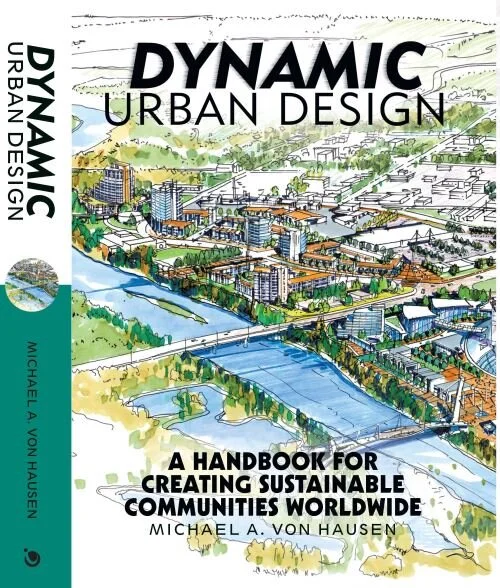 Image 1 of 1
Image 1 of 1


Dynamic Urban Design: A Handbook for Creating Sustainable Communities Worldwide (2013)
514 pages.
This book is divided into four parts. Part 1 outlines the background and
history of urban design and sustainable community development. It also
sets out, in chapter 4, a framework of elements and principles for sustainable
urban design. Part 2 examines the comprehensive plan-making process,
including the critical analysis and synthesis components. Part 3 describes
the urban design evaluation process and then highlights innovative
downtown as well as suburban development projects. Part 4, the final
portion of the book, discusses the pitfalls of urban design implementation
and what conditions are required to create sustainable urban design plans.
The core content of this book is supplemented by two appendices that
provide templates to customize economic and sustainability measurement,
extensive print and online resources, as well as a glossary.
Dynamic Urban Design brings theory and practice together in a
tapestry of explanations, illustrations, and case studies. It provides a
strategic framework and a tool kit to redesign existing suburbs, enhance
rural towns, retrofit downtowns, and design new, sustainable communities
worldwide. Although the case studies center on North America, the intent
is to present a strategy and process that can be applied to urban design
projects anywhere in the world.
514 pages.
This book is divided into four parts. Part 1 outlines the background and
history of urban design and sustainable community development. It also
sets out, in chapter 4, a framework of elements and principles for sustainable
urban design. Part 2 examines the comprehensive plan-making process,
including the critical analysis and synthesis components. Part 3 describes
the urban design evaluation process and then highlights innovative
downtown as well as suburban development projects. Part 4, the final
portion of the book, discusses the pitfalls of urban design implementation
and what conditions are required to create sustainable urban design plans.
The core content of this book is supplemented by two appendices that
provide templates to customize economic and sustainability measurement,
extensive print and online resources, as well as a glossary.
Dynamic Urban Design brings theory and practice together in a
tapestry of explanations, illustrations, and case studies. It provides a
strategic framework and a tool kit to redesign existing suburbs, enhance
rural towns, retrofit downtowns, and design new, sustainable communities
worldwide. Although the case studies center on North America, the intent
is to present a strategy and process that can be applied to urban design
projects anywhere in the world.
